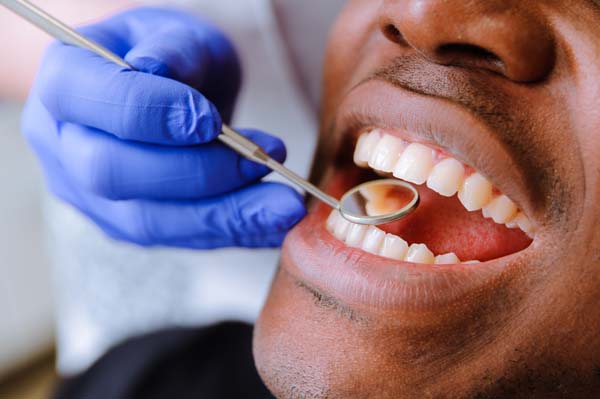What does Implant Restoration Entail? [Dental Implants]

A dental implant is an excellent restoration choice for patients who have lost a tooth or need tooth extraction due to infection. The implant is a metal screw that is inserted into the jawbone surgically to substitute the lost tooth’s root. After the surgery, patients will receive restoration for their new dental implant. A general dentist may be able to complete the implantation and restoration or refer the patient to a prosthodontist to get the bridge, crown, or denture.
Implant Restoration Option
Patients have access to a wide range of options regarding the types and material for dental restoration. Patients who need to replace a single tooth will generally opt for a dental crown. Patients with several missing teeth will benefit from a bridge or denture.
Zirconia and porcelain are sturdy, natural-looking materials used in producing bridges, dentures, and crowns. These two types of materials are suitable for use on the front and back teeth. The prosthodontist will carefully select the shade of the restoration to blend seamlessly with the smile. They also have hyper-surreal translucency like the tooth’s enamel.
Placing dental implants
Regular dental implant placement procedure takes two surgeries. At the first consultation, the dentist will use diagnostic imaging to create an effective treatment strategy. If the patient has suffered significant bone loss, a bone graft procedure will be required to increase the bone mass to support the implant.
Before the surgery starts, the patient will be placed under anesthesia to ensure comfort. The surgery commences by creating an incision over the gums and drilling a pilot hole in the jaw. Afterward, the dentist will place the implant and stitch up the gum over the implant.
Dental implants need about three to six months to integrate appropriately with the jawbone. After osseointegration, the dentist will invite the patient for a second surgery. During the procedure, the dentist will make another incision in the gums to reveal the implants, connect an abutment to the top of the implant, and stitch the gums, leaving the abutment exposed above the gum. The abutment is what connects the new restoration and the implants. It typically takes about two weeks for healing and recovery after this surgery.
The last stage of the implantation procedure is the placement of the dental restoration.
Immediately Load Dental Implants
Also known as teeth-in-a-day, the bridge, crown, or denture is connected to the abutment the same day after inserting the implants in the jaw. The implants used are usually smaller in diameter than regular implants.
Patients can also opt for All-on-4, which is an ideal solution for patients who have lost the teeth on an entire dental arch. Four implants are inserted into the jaw to support a full-arch denture, solving the issue with poor fitting and bone atrophy that often occur with traditional dentures.
Final Note
A dental implant restoration is the best choice for replacing lost tooth because they keep the bone stimulated and prevent degeneration. If you are missing a tooth, book an appointment with a dentist immediately to get a dental restoration to preserve the beauty and function of your smile.
Request an appointment here: https://familychoicedentistry.com or call Family Choice Dental at (505) 634-5657 for an appointment in our Albuquerque office.
Check out what others are saying about our services on Yelp: Read our Yelp reviews.
Related Posts
If your wisdom teeth have begun to emerge, it is time to speak to your dentist. When these teeth are impacted, they can have some serious effects on your oral health. It is important for you to understand the risks these teeth pose and the steps you should take. Your dentist can walk you through…
Teeth whitening remains one of the most popular cosmetic dental treatments. This treatment offers individuals the opportunity to enhance their smiles and boost their overall confidence. With numerous options available, two primary choices dominate the conversation: professional teeth whitening versus at-home whitening kits purchased over the counter. Both methods can brighten teeth, but there are…
Getting a smile makeover means getting at least one type of cosmetic dental treatment. You may want to improve your smile, but along with these treatments is the benefit of better oral health. Finding out more about this makeover can help you make informed decisions. Here are the details to consider about a smile makeover.The…
People often have wisdom teeth extraction performed when these teeth come in behind the second molars of the upper and lower jaw. Wisdom teeth appear between the ages of 17-25 and may crowd the other teeth, causing pain and possibly changing the bite of the teeth. Those who undergo an extraction often have questions about…
